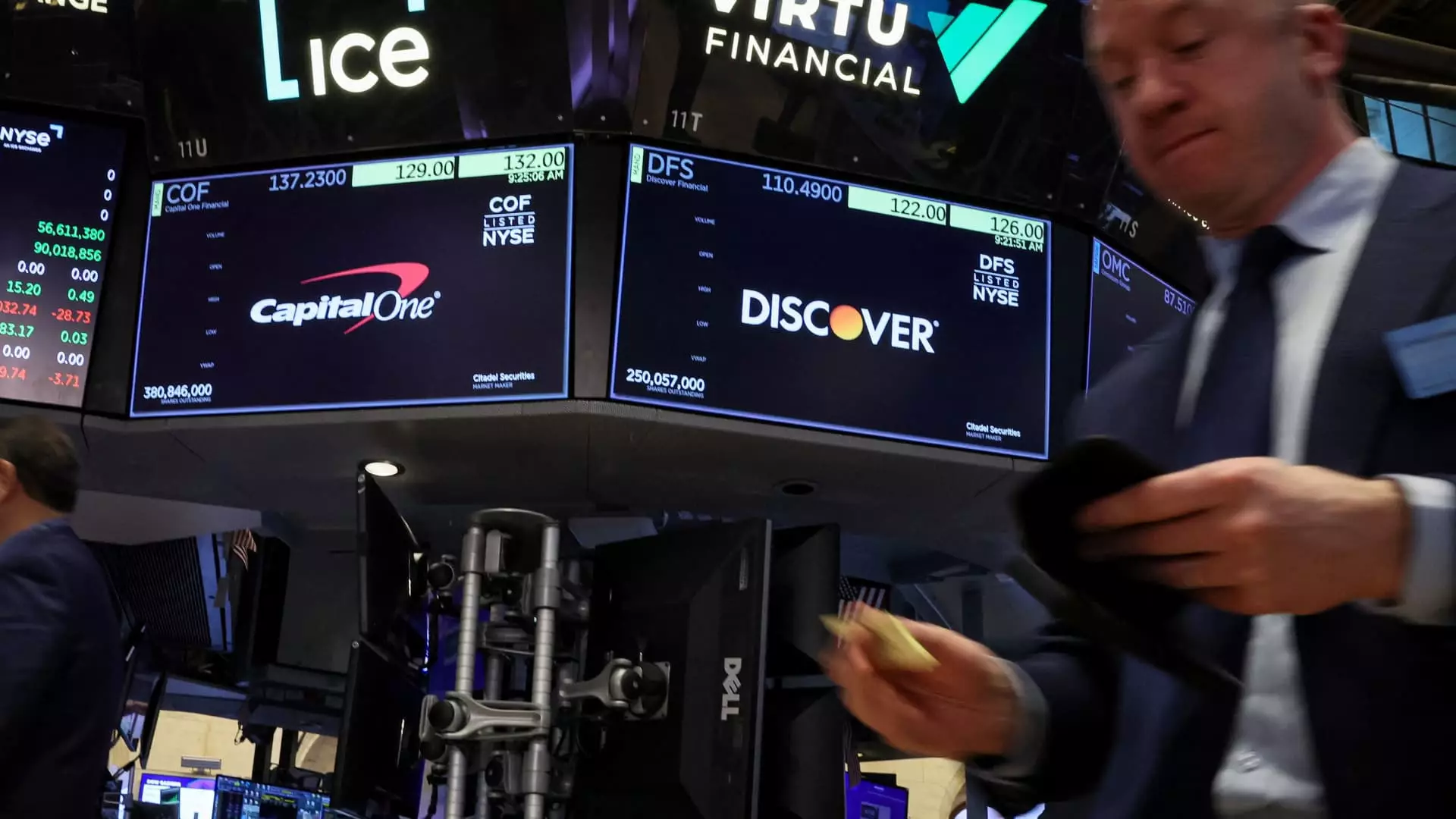The financial world is buzzing with speculation surrounding Capital One’s audacious merger proposal with Discover Financial Services. This high-stakes match-up isn’t just about combining balance sheets; it’s about reshaping the competitive landscape in the credit card market. According to analysts from BTIG, if this merger goes through, Capital One could see its share price skyrocket to an astonishing $427, marking an incredible increase of over 137% from its recent closing price.
Such projections raise intriguing questions about the future of Capital One in a highly competitive sector. BTIG’s upgrade from a hold to a buy rating highlights their belief that the merger is not simply an incremental improvement but a transformative leap that promises to bolster Capital One’s pricing power in the premium credit card market. A successful acquisition could effectively position Capital One as a heavyweight contender against industry giants like Visa and Mastercard.
The Gems in Discover’s Network
By integrating Discover’s payments network, Capital One stands to tap into a reservoir of unleashing earnings potential. The analysts noted that Discover has long been viewed as a hidden gem with an underutilized network. With Capital One’s technological prowess, there lies tremendous scope for optimizing Discover’s capabilities to gain market share in a competitive environment. This raises an essential discussion about whether this partnership can fortify Capital One’s market position or if it merely shines a light on its existing weaknesses.
While some skeptics might argue that the merger could lead to redundancies or cultural clashes, the optimists champion this initiative as a strategic means to streamline operations and enhance efficiencies. Capital One’s executives have expressed confidence in the merger, asserting it is “well-positioned to gain approval” amid comprehensive regulatory scrutiny. This attitude depicts a determined spirit, representing a company willing to do what it takes to adapt and thrive.
Undeterred by Regulatory Headwinds
However, the anticipated merger isn’t without its hurdles. Recent concerns voiced by the Justice Department regarding the concentration of the merged entity in the subprime credit card market underscore the potential pitfalls of regulatory scrutiny. It’s easy to get caught in the maelstrom of legal battles that could draw out the merger timeline, but Capital One remains resilient, backed by analysts from firms like Citi and Jefferies who still expect the deal to materialize.
This conflict ignites a larger discussion about the role of regulatory bodies in shaping market dynamics. There’s a delicate balance between promoting competition and preventing monopolistic tendencies. Some may argue that an overly cautious regulatory approach could inhibit innovation and limit consumer choice. Capital One’s proactive steps in tightening underwriting requirements in recent years could indeed serve as a strategic move that not only positions them favorably against American Express and other competitors but also showcases a commitment to prudent risk management.
Earnings Power and Capital Allocation
Regardless of the merger outcome, BTIG suggests Capital One remains a promising investment. Their standalone price target of $208 per share still reflects significant upside potential. One pillar of their optimism is the excessive capital Capital One has accrued since disclosing its merger plans. The firm could potentially engage in a massive $25 billion stock repurchase program over the next three years, which could elevate earnings per share drastically.
This kind of capital allocation strategy speaks volumes about Capital One’s financial health and management’s commitment to maximizing shareholder value. The notion that they could repurchase 12% of their own stock demonstrates a belief in the company’s underlying value, reaffirming investor confidence—even amidst uncertainties.
Looking Ahead: The Broader Implications
As discussions of antitrust concerns swirl, they cast a shadow on the financial services industry as a whole. Capital One’s case is emblematic of a broader trend in which big players aim to expand through mergers and acquisitions. While some may see this as a troubling sign of market consolidation, others argue that such moves prompt necessary efficiencies and innovations that ultimately benefit consumers.
It’s particularly interesting to consider how companies like Capital One navigate this precarious landscape. Engaging in mergers presents not only the opportunity for expansion but also the risk of facing public and governmental pushback. Analyst predictions will inevitably shift as the negotiation process unfolds, but one sentiment remains pervasive: Capital One is a company rooted in resilience, adept at honing its competitive edge amidst turbulent market conditions.
In the end, whether Capital One’s stock soars towards the ambitious heights forecasted by BTIG hinges on navigating both regulatory landscapes and market dynamics astutely. The stakes are high, but the potential rewards could be even higher for those who dare to invest in the company’s ambitious journey forward.

